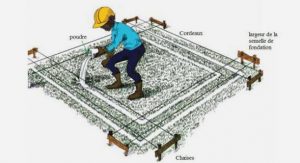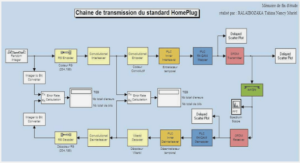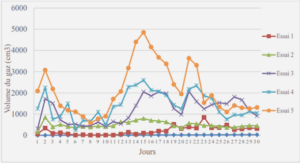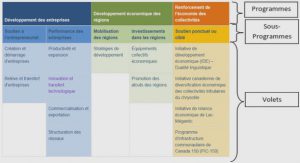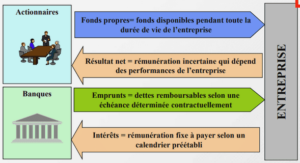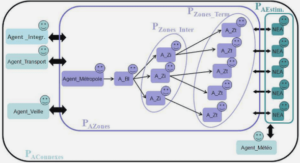ANALYSE DES CARACTÉRISTIQUES DU CANAL MIMO DANS MINE SOUTERRAINE
Structure of the Thesis
The rest of the thesis is structured as follows:
Chapter II provides sorne background material about MIMO and introduces important concepts such as the diversity schemes that will be used in chapter IV.
Chapter III, sheds the light on understanding wireless propagation in the mine tunnel. In addition, it presents sorne mathematical derivations to exp lain the relation between MIMO channel and lossy overmoded waveguides and it explains the differences between different channel modelling.
In Chapter IV we will use different beamforming techniques such as MRT and ZF to compare their performance in the underground mine. In addition, a comparison between antenna alignments will be studied for severa! frequencies.
In Chapter V, we will prove mathematically and theoretically that limiting the number of MIMO antennas in narrow mines can achieve the same performance as higher antenna MIMO arrays. In addition, we will estimate the number of modes in severa! tunnel shapes.
Finally, Chapter VI concludes the thesis by reaffirming our contributions and further studies.
Adopted Methodology
For the first step, in order to characterize the MIMO channel in a specifie environment, we need to study the MIM 0 systems which in terms require the propagation channel to be correctly characterized or modelled. This characterization is important as it provides a better understanding of propagation phenomena, such as refection, diffusion and refraction, in any given environment. It’s known that for our designated environment that it acts as waveguide when dealing with VHF. Renee determining the number of propagating channels can help in building our estimating formulas and that by conducting massive simulations for varions mine environments and different channel parameters. The chart below shows the approach followed to achieve our proposed
solutions.
OVERVIEW OF MIMO AND DIVERSITY TECHNIQUES
Sorne challenges in wireless propagation are the fading of the signal due to many physical behaviors of waves. As a result, we have multiple single components at the receiver, this multipath propagation environment (MPE) leads to a superposition of multiple signals, which leads to interference that can be destructive or constructive. The challenge faced by future wireless communication systems is to achieve high data rate combined with high-quality service. Knowing that spectrum is a scarce resource, and due to MPE, this requirement calls from means to radically increase spectral efficiency.
Indeed, MIMO can overcome these problems without scarifying additional bandwidth or power. In this chapter, we will brie fly shed light on MIM 0 systems in order to facilitate the idea for the next chapters. Also, we will introduce sorne MIMO techniques that permit a deviee that uses a couple of antennas at the transmitter or receiver to take advantage of spatial diversity in order to enlarge the reliability and the throughput of a channel.
Principle Characterization ofMIMO Based Systems
In order to characterize MIMO systems, we must recall two key pararneters represented by the angular spread and capacity. Multiple transmission paths in any environment could increase the capacity if we considered treating each path as an independent channel. In tunnels, which is familiarized by its small angular spread, the using of beamforming can be quite different, and that is due to the inability of the receiver to distinguish between those paths. A solution can be proposed by usmg diversity techniques which will be discussed in the next subsection. The capacity of a MIMO system can be predicted by considering N Tx transmitting antennas and N Rx receiving antennas, and derived by Shannon’s law
……….
|
Table des matières
Acknowledgment
TABLE OF CONTENTS
LIST OF FIGURES
List OF ABBREV AIT A TI ONS
ABSTRACT
CHAPTERI
INTRODUCTION
1.1 Motivation
1.2 Research Problematic
1.3 Previous Efforts to Design Antenna Configuration in Tunnel Environments
1.4 Proposed Solutions
1. 5 Research Objectives and Hypothesis
1.6 Contribution and Publication
1. 7 Structure of the The sis
1.8 Adopted Methodology
CHAPTER II
OVERVIEW OF MIMO AND DIVERSITY TECHNIQUES
2.1 Introduction
2.2 Principle Characterization ofMIMO Based Systems
2.2.1 Causes of Fading
2.2.2 Additive White Gaussian Noise (AWGN)
2.2.3 Singular value decomposition (SVD)
2.2.4 Water-Filling Method
2.2.5 Channel State Information (CSI)
2.2.6 Ergodic Capacity
2.2.7 Angnlar Spread and Coherence Distance
2.3 MIMO Categories
2.3.1 Spatial diversity
2.3.2 Closed-loop spatial multiplexing
2.4 Transmitting Beamforming Analysis
CHAPTER III. MODAL ANAL YSIS OF ELECTROMAGNETIC W AVE PROPAGATION IN
UNDERGROUND MINES
3.1 Introduction
3.2 Related Works of Channel Mode ling in Waveguides
3.2.1 The Waveguide Model
3.2.2 Geometrical Optical Model (Ray Tracing)
3.2.3 Hybrid Model
3.3 Modal Analysis of Lossy Wavegnide Environments
3.3.1 Multi-Mode Propagation in Lossy Waveguides
3.3.2 Theoretical approach for determining the number ofmodes
CHAPTER IV PERFORMANCE ANALYSIS OF SUIT ABLE MIMO DOWNLINK SYSTEMS IN
UNDERGROUND MINE
4.1 Introduction
4.2 MIMO Antenna Alignment
4.3 System Mode!
4.4 Theoretical Results
4.4.1 Diversity Techniques Results Discussion
4.4.2 MIMO Antenna Alignments Results Discussion
4. 5 Conclusion
CHAPTER V ANALYSIS OF MIMO CHANNEL CHARACTERISTICS IN LOSSY W A VEGUIDES
5.1 Introduction
5.2 Theoretical Approach
5.2.1 MIMO Capacity
5.2.2 Performance Reduction Factors in Tunnels
5.2.3 Degenerated Channels
5.3 System Mode! and Theoretical Validation
5.3 .1 Effects of Changing Dimensions of the Tunnel Results
5.3.2 Effects oflncreasing Antennas on Capacity and Power Results
5.4 Estimating the Number of Modes in Underground Mine Tunnel
5.4.1 Simulation Setup
5.4.2 Straight Tunnel
5.4.3 H-bend Tunnel
5. 5 Results Discussion:
5.6 Conclusion:
CHAPTER VI
CONCLUSION
6.1 Contributions
6.2 Future work
APPENDIX A
NARROW BAND ASSUMPTION IN WIRELESS CHANNEL MODELING
REFERNECES
![]() Télécharger le rapport complet
Télécharger le rapport complet

